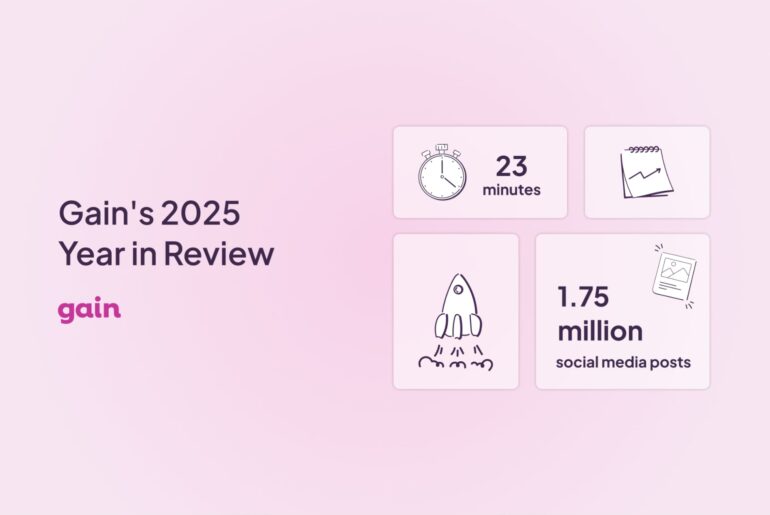Does it seem like your team is working hard but not actually being productive or achieving the growth results your marketing agency desires?
There are so many reasons why your team may not be getting much work done. From constant emails to chasing after busy clients, agency life is filled with constant distractions that can divide our attention and hinder our productivity. Missing deadlines, feeling stressed out, and failing to achieve a proper work-life balance are all possible end results when your team struggles to manage its time.
Here’s a look at 5 of the top time-wasting mistakes your marketing agency is probably making and how to avoid them.
1. Spending too much time on emails
A survey by Adobe found that most people spend on average 3.1 hours per day sending and checking their emails. That amounts to 15.5 hours per week!
We all have to use email to communicate with our colleagues and clients. But it’s easy to waste a ton of time if you are reading and responding to emails in real-time throughout the entire day.
When you’re constantly interrupting your work with emails, it can take extra time to get back on task. It’s important to remember that not all emails require an immediate response.
Rather than constantly checking your email throughout the day, encourage your team to set aside specific times to read and respond to messages.
Keeping your work email inbox free of newsletters and promotional messages can also help save time going through your inbox each day.
Try rerouting non-essential emails, such as newsletters and news feeds/alerts, to a separate email address or specific folder that you can check once per day or week.
There are many tools that can also help your team quickly turn emails into actionable tasks. For example, Doist integrates with various email clients to help turn your inbox into a to-do list, allowing you to label tasks and set deadlines.
2. Too many meetings
According to Reclaim.ai, busy professionals are spending 25.3% more time in meetings compared to February 2020, and 308.8% more time in one-on-one meetings specifically.
Meetings remain one of the top time wasters in the workplace. In fact, studies show we are meeting more than we did pre-pandemic, despite the increase in remote work.
Adjusting to remote work and async communication can be challenging for teams who have always worked in a physical office space together. However, having too many meetings can disrupt your workflow and, over time, do serious damage to your team’s morale and work-life balance.
So before scheduling that next call, ask yourself: is a face-to-face meeting (whether in person or via Zoom) absolutely essential? Or could you send discussion points and action items via email or a quick Loom video instead?
Many companies, such as Dropbox, are embracing “non-linear” workdays, expecting employees to be available for meetings during a shorter period of time per day (ex: 3-4 hours), and then allowing them to organize the rest of their day independently.
Another option gaining popularity is a “No Meeting Day” one day per week (for example, Wednesdays), allowing teams to dedicate time to deep, creative work without interruption.
3. Not fully defining and documenting a content approval workflow
There are a lot of people involved in the content creation process at agencies. But as you add more people to your team (writers, designers, managers, etc.) and more clients, the content approval process can be a huge time suck if you haven’t fully defined and documented the workflow.
The back-and-forth content reviewing and editing process can easily drag on forever, resulting in missed deadlines, errors, and more. If a disorganized content approval process is taking up too much of your team’s time, it’s worth reevaluating and restructuring your workflow.
Think about who needs to be involved at each step: Who is responsible for creating the content? Who needs to review it? Who is in charge of sending it to clients?
Once you define each step, you can automate the process to save time and eliminate any unnecessary back-and-forth.
4. Chasing unresponsive clients
Every agency has to deal with an unresponsive client at some point. Unfortunately, you can waste a lot of time sending follow-ups. Not to mention, scrambling to meet the deadlines and goals you initially set together when they do finally respond.
Constantly chasing unresponsive clients can also damage your relationships with other clients, as your team has to shift their schedules and priorities on a whim.
To avoid chasing clients, make sure to ask them which communication channels they prefer to use and agree on how you will communicate with each other from the very beginning. It’s also a good idea to understand their day-to-day schedule so your team knows when to expect responses.
Every client is different, so your team may need to adjust to their preferred work style to keep projects moving forward. If a client remains completely unresponsive, don’t hesitate to let them go. Obsessing and worrying over their unresponsiveness can be unproductive, and your team’s time and energy could be better spent elsewhere.
5. Never-ending revision rounds
Part of any good client-agency relationship is giving your clients the opportunity to provide feedback on the work you’re doing. However, allowing endless rounds of review or edits can quickly damage your team’s productivity if you aren’t careful.
When you allow “unlimited” edits, you may be cutting into time dedicated to other projects. It also creates more work for everyone on your team and can even put your colleagues in an uncomfortable situation if they need to push back or tell a client “no” to end the editing process.
The first (and arguably best) way to make sure your team isn’t wasting time on lengthy revision rounds is to indicate in your proposals and contracts how many rounds of revisions you will provide for each type of content.
You can also define “deadlines” for the revision/editing stage to avoid falling behind on overall deadlines for the content or campaign. Rather than set a firm calendar date, you can set deadlines, such as one week, for them to review and request revisions.
When you’re dealing with a large volume of content or numerous clients, it’s so important to keep feedback organized so that your team doesn’t have to dig through various channels to find the latest versions of files.
Wrapping Up
Time management is a constant challenge for agencies. Even the best agencies struggle to stay on top of everything and constantly optimize their processes. Avoiding these common mistakes can have a dramatic impact on your productivity as a team and the success of your entire agency and we’ve designed Gain to help tackle these exact challenges.
Your team can create automated approval workflows so that once someone has completed their work, they can submit it for review and the next person in the workflow is automatically notified that their input is required, eliminating the need for the manager to mediate that handoff and saving them time.
We also know how tricky it can be to send clients reminders without feeling like you’re annoying them. With Gain, your team can send automated reminders to clients when there’s content ready for them to review. This way your team doesn’t have to send those reminder emails manually and they can use the time with their clients discussing strategy and more important work.
Finally, your team can schedule and publish social media content automatically from Gain once it’s approved. This eliminates the extra time you might normally spend uploading the post copy and media assets on each platform or into a separate scheduling tool.
We ensure that the tedious tasks of sending content, following up for feedback, and managing change requests for multiple clients can happen without taking away from your team’s valuable time. Start a free trial of Gain and save precious time with an automated approval workflow for all your marketing content!






